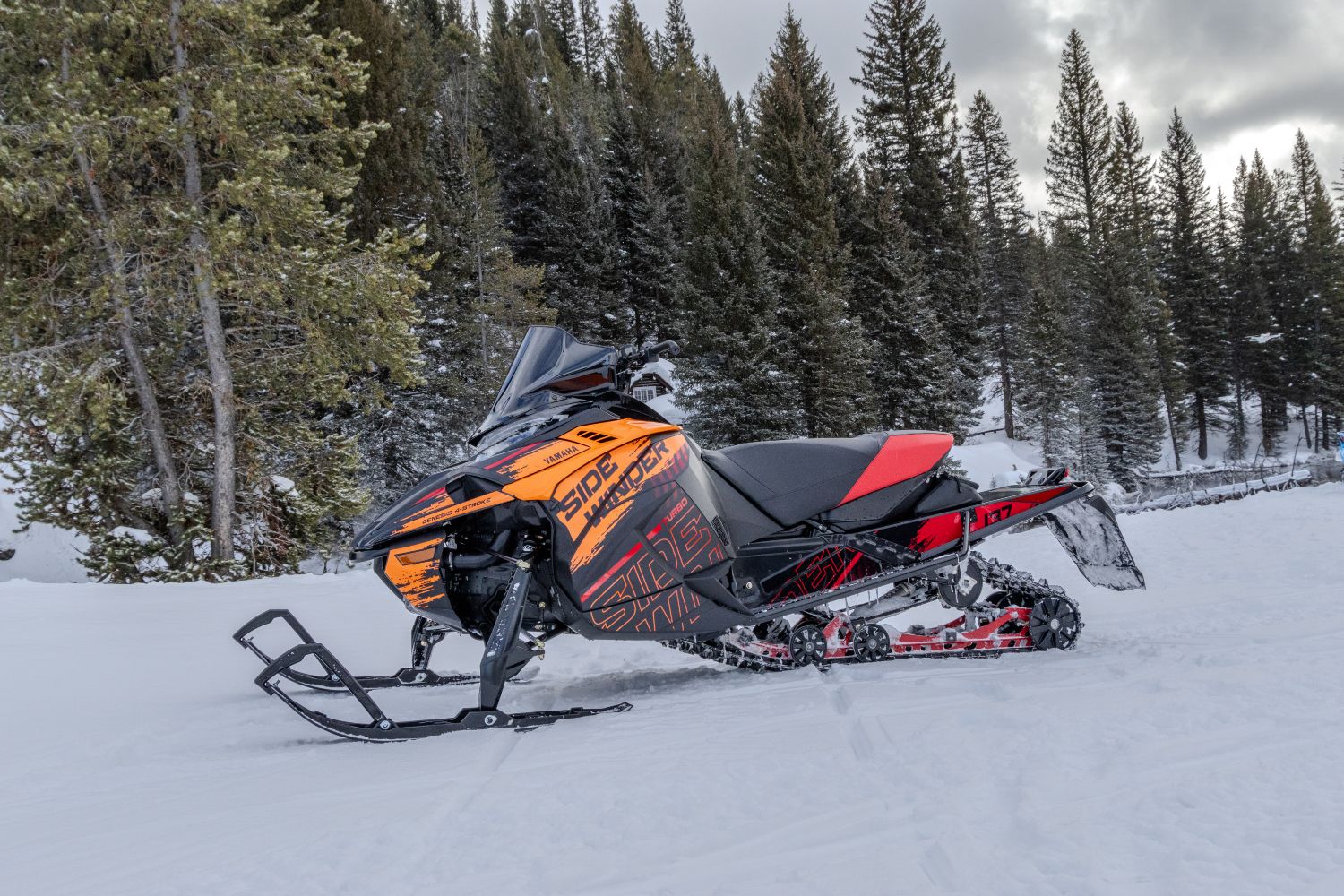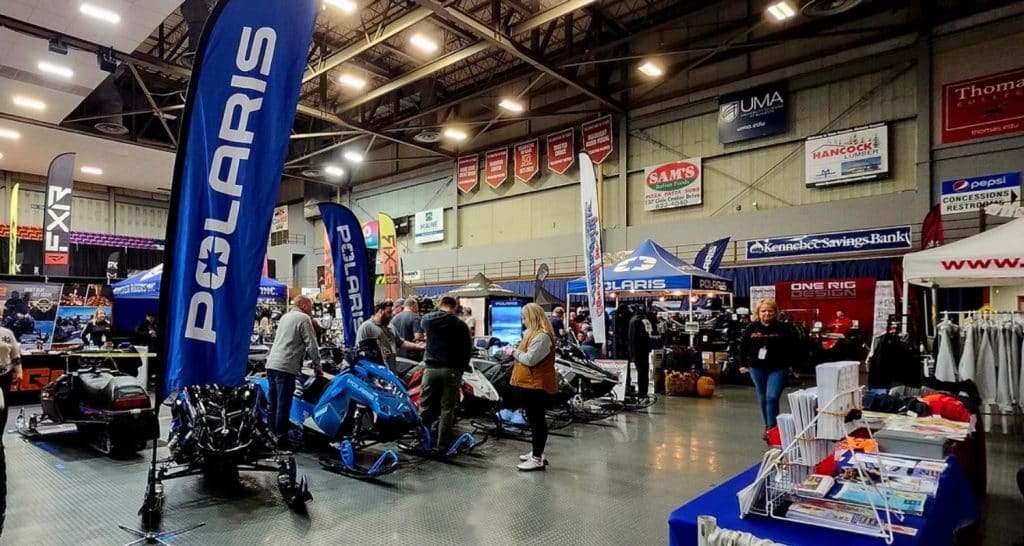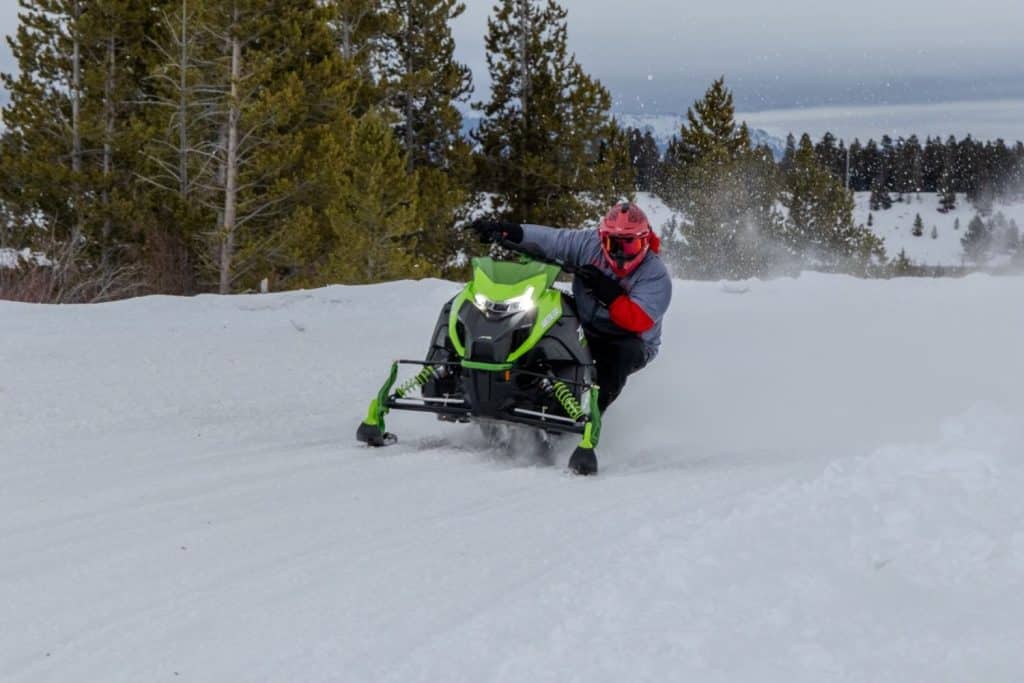It’s with a twinge of sadness that I write these few lines about Yamaha’s last year of snowmobile production. Yamaha has announced that 2025 will be the last year of production for the snowmobile division, bringing to an end 57 years of production.
A rich history
The very first snowmobile produced in 1968 was called the SL350. Yamaha has always been renowned as a very conservative company, but it has nonetheless brought a great deal of technological innovation to the world of snowmobiles. I remember the release of the famous RX un in 2003, which was the first production year in the entire industry for a snowmobile with a high-performance four-stroke engine. It’s impossible to forget the extraordinary launch we were treated to by the company’s directors at the time.
A reception awaited us in a specially prepared room, with a few snowmobiles hidden under Yamaha canvas. They had warned us not to touch. After a few minutes, one of the representatives started one of the sleds without removing the canvas. What an unusual sound, but so pleasing to the ear! From that moment on, we knew we were in for a major change: the arrival of high-performance four-stroke engines in the snowmobile world…
Yamaha’s marketing department pulled out all the stops for this extraordinary event. Several top Japanese executives had travelled from the land of the rising sun to meet us and observe our reactions. Many of them spoke neither French nor English, so an interpreter was on hand to translate for us, so that we could get our questions answered directly from the engineers who had worked on the project. The testing side of things wasn’t left to chance, either: we were given an oval track on which to test the new car, as well as an acceleration track with which to compare the famous SRX 700 three-cylinder 2-stroke and the RX1. Are you surprised if I tell you that the RX1 was faster… It was truly a turning point in the history of the industry, literally forcing other manufacturers to follow suit with high-performance four-stroke engines.
The Sidewinder L-TX is a worthy successor
Our test vehicle is unquestionably one of the most representative of Quebec snowmobilers. We’re talking about the Sidewinder L-TX SE 2025.
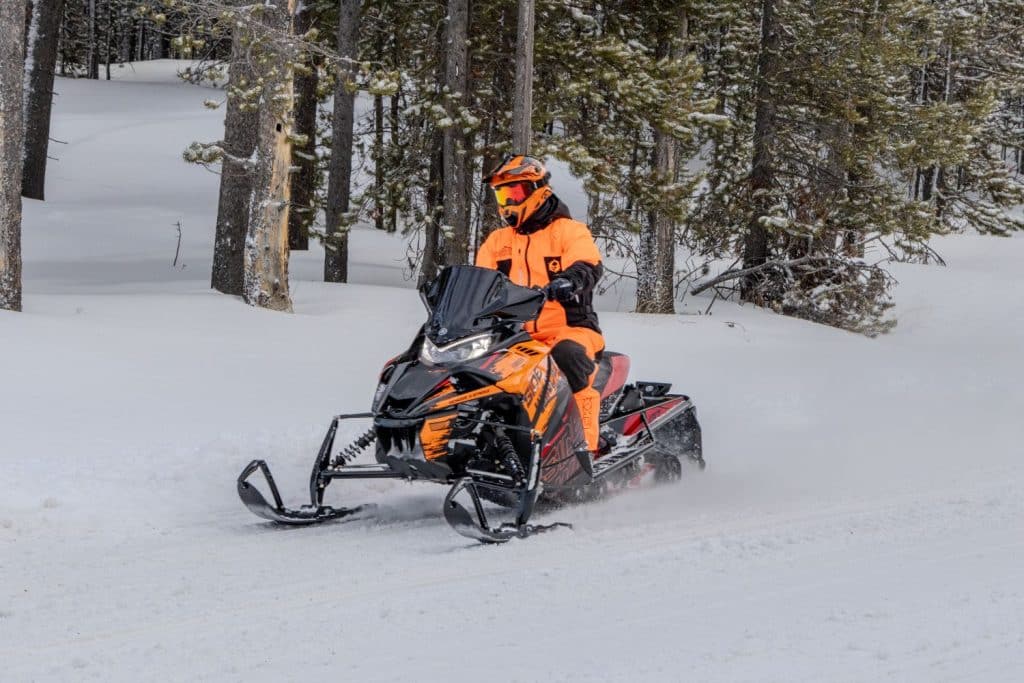
This version of the Sidewinder is close to an entry-level model in the four-stroke turbocharged division. It’s fitted with a 1.25-inch lugged track 137 inches long, with high-pressure aluminum HPG shocks in the rear suspension, and fox zero RC 1.5 in the front. These shocks aren’t the best, but the value for money is good.
Powertrains: Always outstanding!
For yet another season, it’s impossible not to highlight the excellent 1000 CC, three-cylinder turbocharged engine that develops over 200 horsepower. This engine has proven its worth since it entered the market in 2016, and to this day remains the most powerful in the industry. Yamaha has always been able to add a little grain of salt that sets the company apart from the competition. Turbo compression is well known and has been around for many years, but where the Japanese have shown their ingenuity is definitely in handling the excess pressure released by the system. The air compressed by the turbo passes through the so-called intercooler, which cools the air for a more efficient explosion when it enters the engine. When you’re at full throttle and you cut the gas, the excess pressure riveted to a closed carburettor valve has to be evacuated. In a conventional system, the air is vented to the outside, making the sound of released pressure.
Yamaha, on the other hand, uses this overflow of pressure from the turbo to return it directly to the engine’s intake silencer, just before it passes back into the turbo. This technique creates a surge of air before it enters the turbine to be recompressed again. The engine is ready to deliver more performance quickly when needed, offering enhanced responsiveness and an even more dynamic driving experience.
On the trail…
As in previous years, the ski’s behavior on the trail gives the rider great confidence. There’s virtually no ski lift in turns, and the relatively high weight of the motorization gives the ski good grip in tighter turns. Although sometimes we’d like a little more.
The Sidewinder L-TX SE 2025’s 1000cc Genesis engine is truly a jewel in terms of performance and smoothness. Its ability to deliver impressive power without any vibration, whether at constant speed or under full acceleration, is remarkable. What’s more, the pleasant sound it makes under full acceleration adds to the overall driving experience.
As for the suspension, the gas-charged shock absorbers do the job, but nothing more. Perhaps we’d like a little more. A slightly softer comfort zone at the beginning of the suspension travel would be appreciated for those hours-long rides.
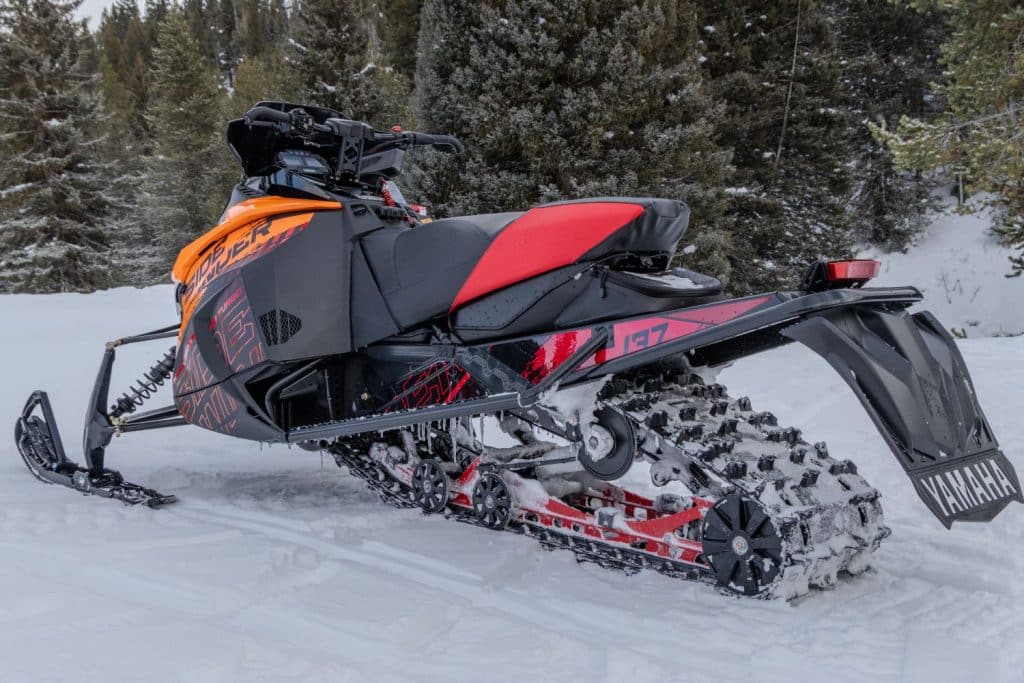
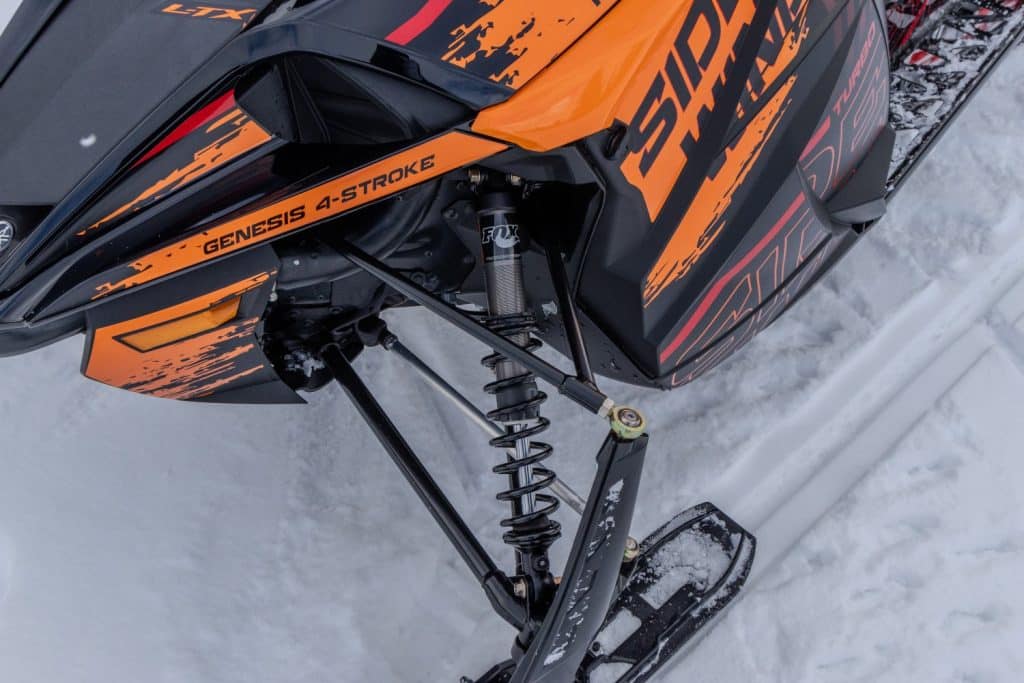
Power steering is practically a necessity on a vehicle like the Sidewinder. It makes cornering easier, especially with a heavier vehicle, and will definitely brighten up the end of a long ride.
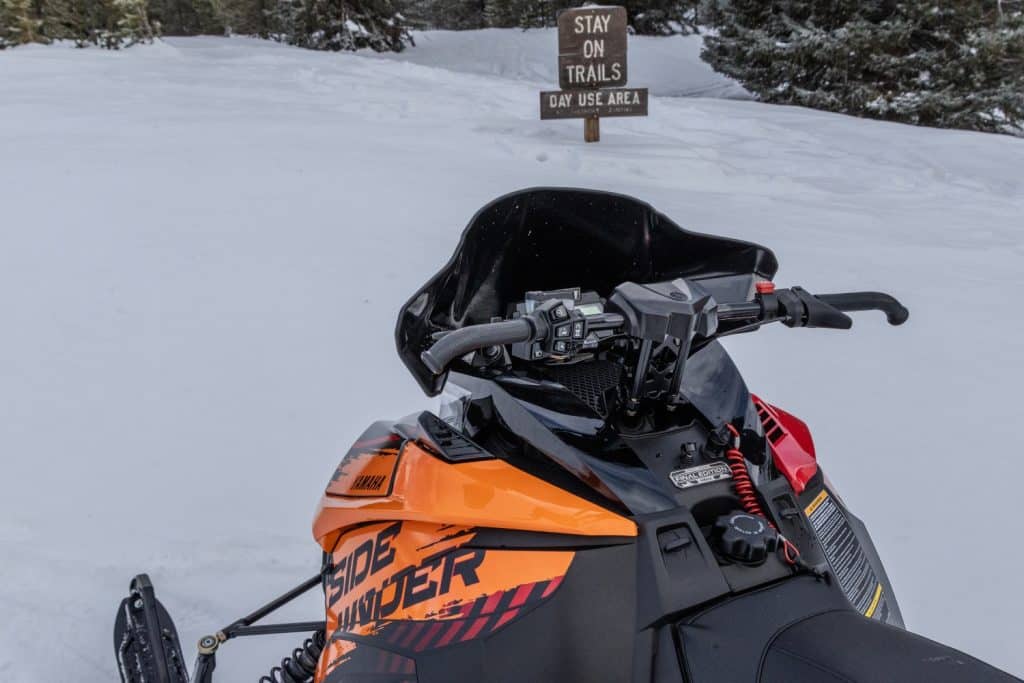
In summary
This snowmobile will surely be a collector’s item in the distant future. It’s the latest in Yamaha’s line of snowmobiles and is sure to appreciate in value over the years, especially with its unique Final Edition emblem.
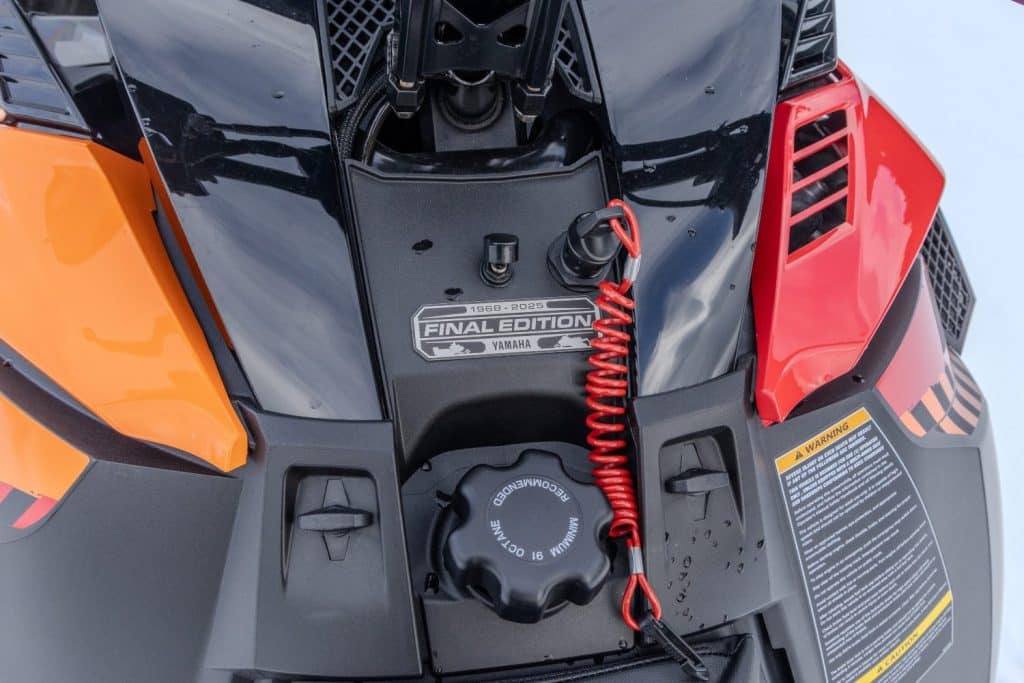
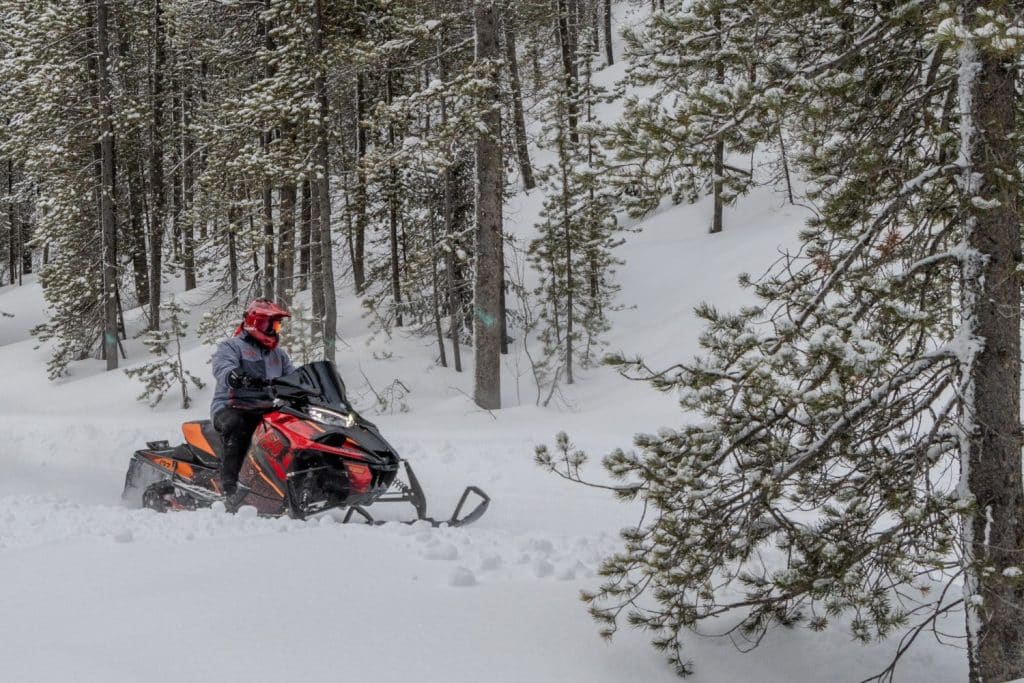
Yamaha’s senior management has assured us that after-sales service will continue to be carried out and maintained for all those who have purchased a Yamaha snowmobile, both in the past and for 2025. Some of you are no doubt wondering about the future of the current partnership with Arctic Cat concerning 1000 CC turbo engines. To date, no statements on either side have been made. Basically, Yamaha is also an engine manufacturer, which could presage a longer-term agreement between the two companies. To be continued!

